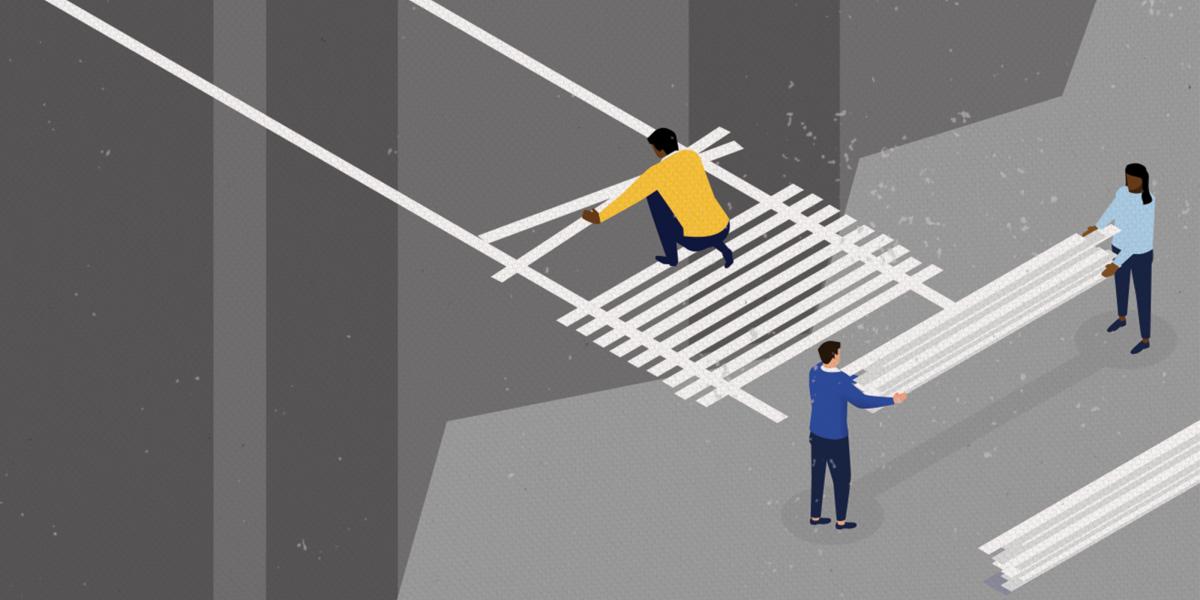Let's Fix Things for Good
COVID-19 is teaching us a brutal lesson: Invest in public health or suffer the consequences.
One of my first official functions as dean of the Bloomberg School back in the fall of 2017 was to preside over a symposium the School organized in collaboration with the Smithsonian Institution to reflect on lessons learned from the response to the 1918 influenza pandemic. It was entitled “When the Pandemic Hits, Will We Be Prepared?”
Our keynote speaker was none other than Anthony Fauci, director of the National Institute of Allergy and Infectious Diseases. He was joined by many of the leading public health experts we are now hearing from on a daily basis. Revisiting the conclusions from this symposium sent chills down my spine. Tom Inglesby, director of the School’s Center for Health Security, summed it up well: “A hundred years after the lethal 1918 flu, we are still vulnerable. Our public health infrastructure has improved greatly, but without a universal vaccine, a single virus could result in a world catastrophe.”
In response to the symposium’s top-line question—“Are We Prepared?”—the answer from the experts was a resounding “No.”
And here we are today. In the pandemic spawned by the SARS-CoV-2 virus, in the millions of cases and hundreds of thousands of deaths that happened with terrifying speed, we face the reality the experts painted for us in stark colors that afternoon almost three years ago. They were right: We were not prepared. And the U.S. will continue to suffer disproportionately due in part to the deficiencies in our public health system and our lack of commitment as a nation to prevention and to health as a human right.
We will make it through this current crisis, but what will happen then? Will we be any better prepared for the next one?
The answer is yes—if we can learn from our lived experience and make the bold decision, once and for all, to invest in the infrastructure and the workforce needed to secure the population’s health every day and to serve us well in times of crisis.
I’m optimistic because a new understanding and appreciation for the value of public health strategies is emerging. I hear people talking about the need for a “public health approach” every day. They are seeing firsthand how protecting one’s individual health depends on protecting the health of the people around them and those in their community. What has flattened the curve of the pandemic in cities around the world is not any medical discovery or drug, but our collective action to practice physical distancing, good hand hygiene, and disinfection combined with strategic testing, contact tracing, and isolation/quarantine. And if we are able to find an effective vaccine in the coming months, it will be the public health system that assures access and community protection.
We will make it through this current crisis, but what will happen then? Will we be any better prepared for the next one? The answer is yes—if we can learn from our lived experience and make the bold decision, once and for all, to invest in the infrastructure and the workforce needed to secure the population’s health.
The pandemic has also reminded us that our health as humans is inexorably interconnected with our global environment and the animals with which we share that environment. And perhaps most dramatically, it puts a spotlight—brighter than ever before—on the disproportionate vulnerability of communities of color and those who are marginalized due to longstanding structural inequities and racism. For too long, we have failed to comprehensively address the extreme disparities in the social determinants of health such as income, education, and housing.
I am also realistic. Progress against these deep-rooted challenges is far from inevitable. In our response to outbreaks of H1N1 in 2009, Ebola in 2014, and Zika in 2016, we saw an infusion of resources for federal, state, and local public health agencies to boost their responses. But these commitments did not last. In fact, funding for public health—including disease surveillance, preparedness, and response efforts—has steadily declined over the last decade, and the public health workforce has contracted dramatically. Many jobs lost during the 2008 recession and its aftermath never came back. Large health departments alone shed more than 56,000 jobs from 2008 to 2018, according to the National Association of County and City Health Officials.
What can make a difference this time? We must start talking now about the need to invest for the long term. Rather than brigades of contact tracers, we need brigades of public health workers who will start with contact tracing and then move on to address many other critical challenges. Rather than pop-up testing sites in low-income communities, let’s create more community health centers. Rather than temporary hotel housing for people experiencing homelessness, let’s build more units to address access and affordability. Our advocacy for these and other long-term solutions must be relentless.
If we do not succeed, we will be faced with the further erosion of resources and trust in public health agencies and organizations. We cannot let the legacy of a public health crisis be the devaluing of public health itself.
To be effective, we need to advocate for a modern, 21st-century public health system as called for by our National Academies of Science and build political will for its support. Our leaders—at every level—must recognize the cost of ignoring public health and undervaluing prevention and preparedness.
Albert Einstein famously said, “In the midst of every crisis, lies great opportunity.” We must seize this opportunity to help our nation prepare for the future. We must act now. We must act as if many lives depend on our success, because they do.
